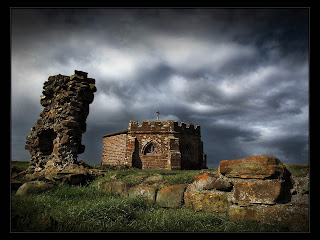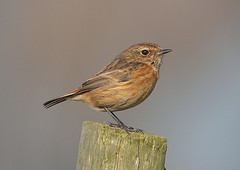....and it used to be worth five pence a few years ago, but this is another 'shilling'.
Its as good an excuse for a post as any....Landart artist Richard Shilling is back and I'm here to promote his new post....all non bird related but so what!
Annapurna-Leaf-Coloured-Discs. Richard Shilling.
I've been worried and wondering where RS had got to for some time now - since late November actually - well now I know....he's been to Nepal. RS has been featured on Birds2blog before and I know lots of visitors like to be pointed in his direction. This fella lets you get inside his head and I strongly recommend if you want a good read you should go HERE
Cockersands Abbey. Peter Guy.
Continuing on the non-bird theme....If you like excellent scenery/landscape to accompany your birding then Cockersands can provide you with it. This is a pretty dramatic and stunning photograph of the old Abbey at Cockersands, where you'll be guaranteed a Wheatear on the masonry come the back end of the year, every year in my record book.
Passing the light. Pete Woodruff.
Well you can tell its one of mine by the lack of quality in a photograph of the ship passing the lighthouse off Cockersands, another bit of brilliant scenery to add to your birding at an excellent location.
Short-eared Owl. David Cookson.
So there had to be a pic of a bird on a birding blog and they don't come any better than this one of the Short-eared Owl. And here's another guarantee....if it's excellent images of birds/wildlife you're after Here they are














































